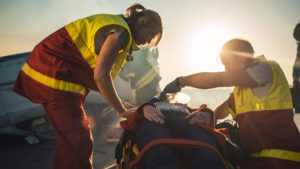Researchers studying brain injury believe that people with unrelated social or cognitive problems may have something in common: a long-forgotten blow to the head. It is widely accepted that severe head injuries can lead to cognitive and behavioral problems. What is new, according to brain researchers Wayne A. Gordan, M.D. and Mary Hibbard, Ph.D., is the contention that there are many other cases where a past blow to the head resulting in unconsciousness or confusion is the unrecognized source of such problems. These problems include learning disabilities, alcoholism, drug abuse, and depression.
Dr Gordon, director of Brain Injury Research Center at Mount Sinaii School of Medicine in New York, says, “[unidentified traumatic brain injury is an unrecognized major source of social and vocational failure.” According to one researcher, “[when you look at children with learning disabilities or behavior problems, there’s often an underlying high percentage of children with traumatic brain injury. We’re looking at about 20%.”
I represent a child who, shortly after sustaining a traumatic brain injury, began exhibiting behavior problems in school. This child was fortunate to have a knowledgeable psychiatrist willing to spend the time educating the teachers that the cause of the change in behavior was the child’s traumatic brain injury. Parents are often in the unfortunate position of being stuck with doctors who discount the effect of head injury on behavior and school performance. I recommend to such parents that they contact their state brain injury associations (e.g. Brain Injury Association of Virginia www.biav.com) to find medical professionals who are expert in brain injury care. Dr. Gordon’s studies show that it is never too late to provide therapy for an underlying brain injury.













Comments for this article are closed.